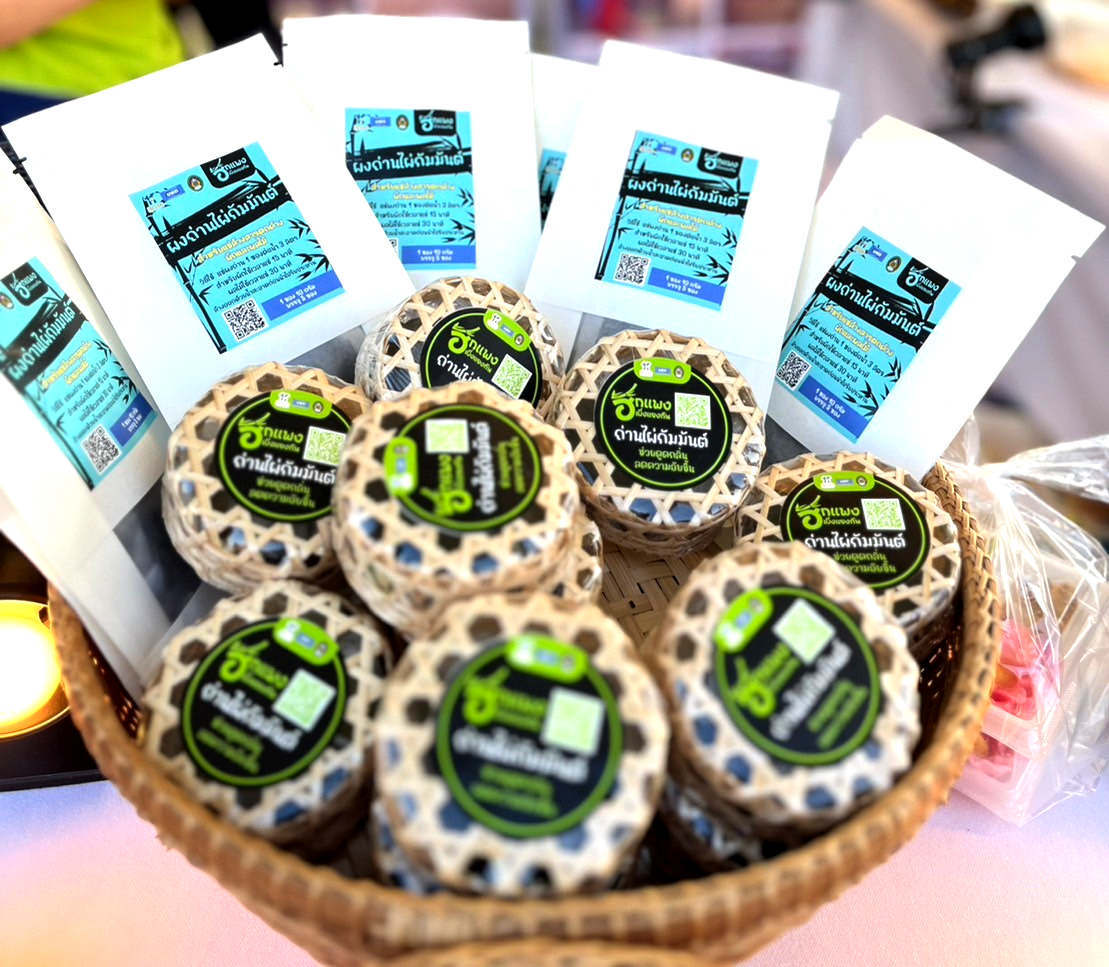Solving Poverty through the Bamboo-Based Economic Recovery for Sustainable Livelihood Poverty Alleviation Model in Tha Li District, Loei Province
Main Article Content
Abstract
The poverty-stricken households in Tha Li District, Loei Province of Thailand, comprising 112 families, heavily rely on bamboo-related endeavors, earning an average annual income around 1017 USD. These households face several challenges, including unregulated bamboo production, substandard bamboo processing methods, absence of standardized packaging, fragmented sales channels, and outdated bamboo wicker products. To address these challenges, the study introduced a model called "Revitalizing the Economy and Enhancing Livelihoods with Bamboo." This model encompasses three sub-models: the Bamboo Shoot Model, Charcoal Model, and Bamboo Wicker Product Model, aimed at catalyzing sustainable livelihoods. The initiatives involve: 1. Implementing improved bamboo cultivation techniques across individual and centrally managed plantations to ensure year-round production. 2. Diversifying bamboo and bamboo shoot products by introducing canned, pickled, and dried bamboo shoots, thereby augmenting their value. 3. Incorporating technological advancements to refine production processes. 4. Ensuring stable market support for the products. 5. Establishing community cooperative enterprises to enhance collective bargaining. 6. Modernizing bamboo wicker products and boosting their market value. 7. Developing high-value bamboo-based products to elevate income levels.
The outcomes have been transformative, resulting in significant profit increases across various product lines: Steamed bamboo shoots saw a 222% profit increase; pickled bamboo shoots achieved a 69% profit increase; dried bamboo shoots recorded a remarkable 657% profit surge; bamboo wicker products surged by 375% in profits; transition to activated carbon from cashew charcoal production yielded a 29% profit hike, while transitioning from traditional bamboo forest maintenance to advanced plantation management and irrigation systems led to a substantial 36% profit rise. This model has offered a sustainable pathway toward socio-economic upliftment for the impoverished households.
Article Details

This work is licensed under a Creative Commons Attribution-NonCommercial-NoDerivatives 4.0 International License.
Area Based Development Research Journal values copyright protection and licensing to safeguard author rights and facilitate the appropriate dissemination of research. Our policies ensure openness, accessibility, and attribution. Authors retain copyright ownership, and articles are published under a Creative Commons Attribution License (CC BY), allowing sharing, adaptation, and proper attribution. Authors have the freedom to publish under the CC BY license, granting broad reuse and distribution permissions. The journal supports posting articles on third-party repositories, adhering to institutional and funding restrictions. Author guidelines detail copyright and licensing requirements, empowering authors with knowledge about their rights and responsibilities. These policies cultivate an environment of collaboration, openness, and responsible sharing, benefiting authors and the research community while honoring intellectual property rights.
References
De Bells, M. P. (2017). Bamboo propagation handbook. Loei: Loei Rajabhat University. (in Thai).
Department of Forestry. (2019). Summary of the establishment of community forests according to forest types. Retrieved January 10, 2023, from: https://forestinfo.forest.go.th/fCom_Regis.aspx. (in Thai).
Jairtalawanich, S. (2021). Design and development a sliced bamboo-shoots cutter. Kasem Bundit Engineering Journal, 11(3), 38-55. (in Thai).
Kiatsongchai, S., Pruksa, S., Maliton, W., Petkanjanapong, P., Soisuwan, K., Inthawong, R., & Yothee, A. (2021). Research for precise poverty alleviation in Loei province. (Research report). Loei Rajabhat University. (in Thai).
Kotler, P., & Keller, K. L. (2016). Marketing management. (15th edition). Edinburgh: Pearson.
Noiprom, N., Wilaikaew, A., & Kulutnam, T. (2019). Dong Sam Kha community forest: Economic values of Nam Kam village, Tha Li district, Loei province. Research and Development Journal, 14(50), 1-12. (in Thai).
Office of Strategy Management Upper Northeast Provincial Cluster 1. (2018). Development plan for Upper Northern Provinces (2018- 2022). Retrieved January 10, 2023, from: http://old.industry.go.th/loei/index.php/5-2561-2565/22323-5-2561-2565/file. (in Thai).
Office of the National Economic and Social Development Council. (2018). National strategy. Retrieved January 10, 2023, from: http://nscr.nesdc.go.th/ns/. (in Thai).
Office of the National Economic and Social Development Council. (2022). Order of appointment of provincial sufficiency economy and sustainable development center. Retrieved October 14, 2023, from: https://opendata.nesdc.go.th/dataset/pelcd42. (in Thai).
Pakeechay, K., & Charoenphun, N. (2021). Bamboo shoot-processed food and the possibility of commercial production. Journal of Science and Technology, 29(5), 865-879. (in Thai).
Phuangchik, T. (2015). Activated carbon from bamboo: Does the market have a high demand?. Journal of Science and Technology, 23(6), 945-954. (in Thai).
Program Management Unit on Area Based Development. (2021). Research and innovations in poverty alleviation: precision and efficacy. (Research report). Office of National Higher Education Science Research and Innovation Policy Council. (in Thai).
Sukjai, K., Kalsirisilp, R., & Langapin, J. (2021). Design and development of bamboo craft splitting and slicing machine. Srinakharinwirot University Engineering Journal, 16(1), 71-81. (in Thai).
Tekhanmag, K., & Thampramaun, P. (2020). Wickers product development to the creative economy of Ban Pakklongbangkapieng, Huaphai sub-district, Muang district, Singburi province. NRRU Community Research Journal, 14(2), 44-56. (in Thai).
Thai People Map and Analytics Platform, (2021). Poverty household numbers. Retrieved April 5, 2022, from: https://www.tpmap.in.th/2564/42. (in Thai).
Thailand Environment Institute. (2021). Bamboo value chain analysis in Thailand. Retrieved June 22, 2022, from: https://tei.or.th/file/library/2021-bamboo_50.pdf. (in Thai).
Thailand United Nation. (2022). Sustainable development goals. Retrieved January 10, 2023, from: https://thailand.un.org/th/sdgs.(in Thai).
Withurathansan, T., Saratusananun, N., & Buttapala, K. (2007). The development of quality products of boiled bamboo shoots packed in bags by the professional group of Ban Ahi community, Tha Li district, Loei province. (Research report). Loei Rajabhat University, Faculty of Science and Technology. (in Thai).


